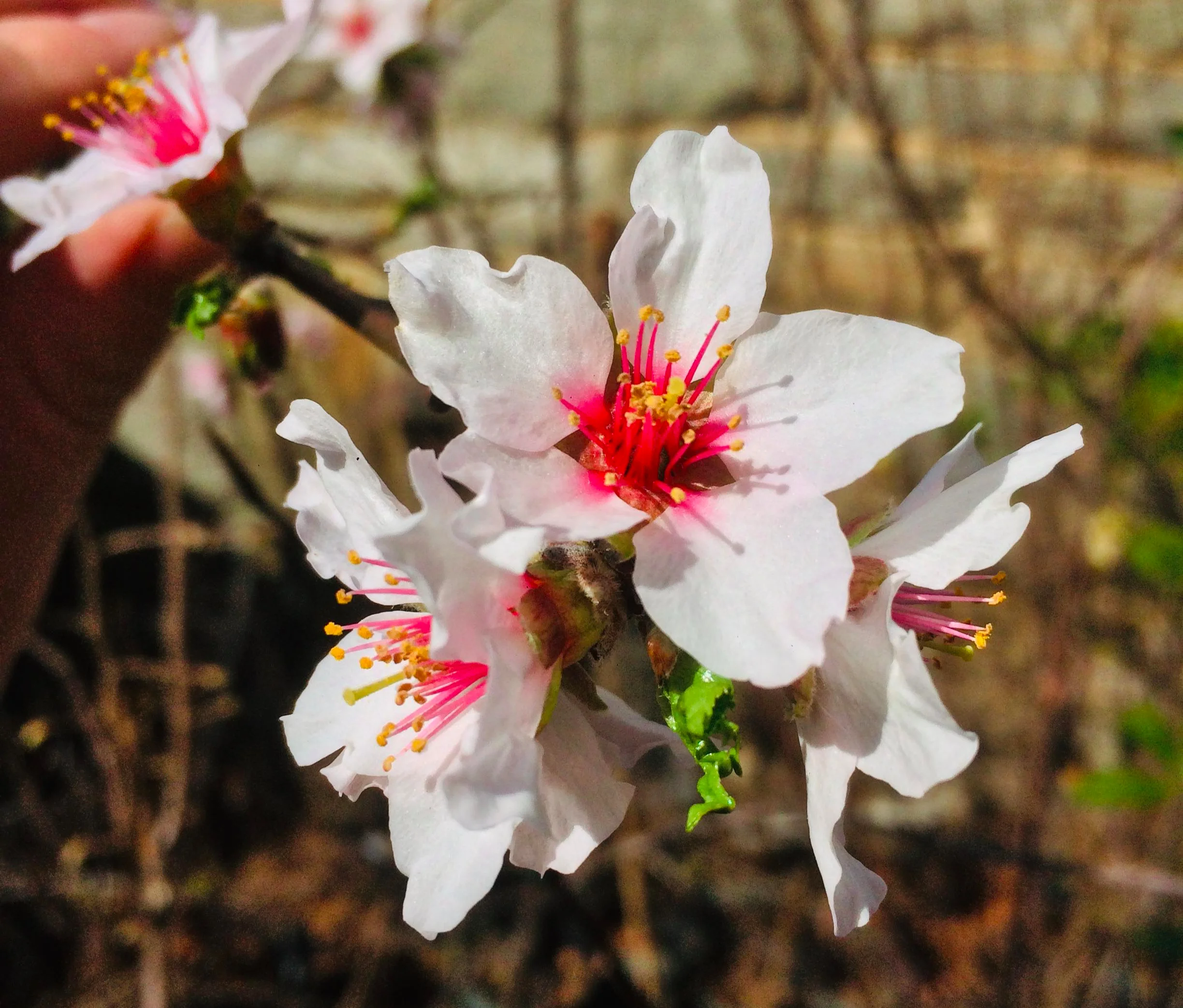Cold Hardy Almonds for the Northeast
Almonds (Prunus dulcis) were one of the first domesticated fruit trees, initially appearing in archaeological sites from around 5,000 years ago. They spread rapidly throughout the Mediterranean, and became a staple of different cultures and diets from Spain to Persia. Unlike closely related peach trees, almond trees can live for upwards of 300 years in the right conditions. They are also a prominent element of the wild apple forests of Central Asia, where they grow naturally alongside the wild ancestors of apples, plums, cherries, walnuts, grapes, and other crops.
Blossoms from Javid's Iranian almond - a cold hardy variety that can grow as far north as zone 5 (southern Vermont and Maine)
From amaretto and marzipan to almond milk, these tree nuts are widely used in a variety of delicious ways. Until recently, those of us in the Northeast were unable to grow almonds ourselves - with the exception of largely subpar cold-hardy hybrids with variable flavor.
Almond fruits are fuzzy like their close relative, the peach. (photo source)
Needless to say, we were excited to find a pure almond cultivar that has grown well for us in zone 6: Javid’s Iranian Almond, first grown and sold by England’s Orchard and Nursery in Kentucky. Originally brought from the high mountains of northern Iran by nurseryman Cliff England's friend Javid, this variety is not just disease resistant, self-fertile, and fully hardy as far north as zone 5 (parts of New York, Maine, Vermont, Massachusetts, etc.), it is also an incredibly flavorful almond. With our first crop last year, we saw exactly why Cliff describes it as having an ‘amaretto’ flavor. With a luxurious sweetness reminiscent of the Italian almond liqueur, it was difficult for us to stop eating these nuts and save them for propagation. Mr. England confirmed that out of all the other cold hardy almonds he has grown, none has come close to the flavor and ease-of-growing of this variety. He recommends growing them on ‘Lovell’ or ‘Nemaguard’ rootstocks. We’re grateful for such a wonderful almond variety, but its importance goes deeper.
When ripe, the fruit splits open and the nut falls out. (photo source)
Almonds are one of the most problematic tree crops in the United States. Over a million acres in California are used to grow just six varieties of almond in vast monocultures that require incredible amounts of water and chemical sprays. The pollination of these trees is the largest managed pollination event in the world, with nearly half of all beehives in the U.S. trucked in for a few short weeks each February. This mass gathering of beehives from across the country, with further stress placed on the bees from transportation and the chemicals sprayed on the almond trees, creates perfect conditions for disease and mites to spread rapidly. These same hives are then trucked back to their summer grounds, and often succumb to Colony Collapse Disorder - bringing new diseases and parasites back to their home states with them.
Honeybee hives are trucked in to California vast almond monocultures from every state in the continental U.S. They spend a few weeks pollinating blossoms that have been sprayed with harsh fungicides, weakening their immune systems and opening up their hives to parasites and diseases which contribute to Colony Collapse Disorder.
If farmers in the Northeast begin growing cold hardy almonds like the variety we have (which does not require spraying for us), it could open up new avenues for sustainable growing of a crop worth over $3.2 billion each year. We will be integrating this tree, and others like it, into an apple orchard to explore the potential to grow these tree fruits (and others like plums, apricots, and cherries) in a diverse system more closely resembling the native habitat of their wild ancestors in Central Asia. Most importantly, we are excited about the prospect of growing our own almonds whose flavor far exceeds anything in the supermarket.




